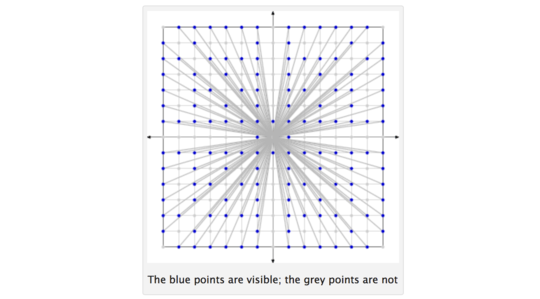23
Introduction
Number theory is full of wonders, in the form of unexpected connections. Here's one of them.
Two integers are co-prime if they have no factors in common other than 1. Given a number N, consider all integers from 1 to N. Draw two such integers at random (all integers have the same probability of being selected at each draw; draws are independent and with replacement). Let p denote the probability that the two selected integers are co-prime. Then p tends to 6/π2 ≈ 0.6079... as N tends to infinity.
The challenge
The purpose of this challenge is to compute p as a function of N.
As an example, consider N = 4. There are 16 possible pairs obtained from the integers 1,2,3,4. 11 of those pairs are co-prime, namely (1,1), (1,2), (1,3), (1,4), (2,1), (3,1), (4,1), (2,3), (3,2), (3,4), (4,3). Thus p is 11/16 = 0.6875 for N = 4.
The exact value of p needs to be computed with at least four decimals. This implies that the computation has to be deterministic (as opposed to Monte Carlo). But it need not be a direct enumeration of all pairs as above; any method can be used.
Function arguments or stdin/stdout may be used. If displaying the output, trailing zeros may be omitted. So for example 0.6300 can be displayed as 0.63. It should be displayed as a decimal number, not as a fraction (displaying the string 63/100 is not allowed).
Winning criterion is fewest bytes. There are no restrictions on the use of built-in functions.
Test cases
Input / output (only four decimals are mandatory, as indicated above):
1 / 1.000000000000000
2 / 0.750000000000000
4 / 0.687500000000000
10 / 0.630000000000000
100 / 0.608700000000000
1000 / 0.608383000000000

Are there any bounds on the range of inputs? – Eric Towers – 2015-12-27T09:24:37.573
@EricTowers The program should work for any reasonable size up to limitations of memory and data type. At least 1000 – Luis Mendo – 2015-12-27T17:21:49.877
Are rational numbers as return values (not strings) allowed? My language has a native rational type, in which
– cat – 2016-04-25T13:54:24.79063/100is a valid literal, usable in computation. (Langs I'm talking about: Factor, Racket)@cat Sure, go ahead! Take into account the required precision, though – Luis Mendo – 2016-04-25T14:11:09.043